Two techniques, one system – HPLC meets UHPLC
Nexera-i MT – Method transfer made easy
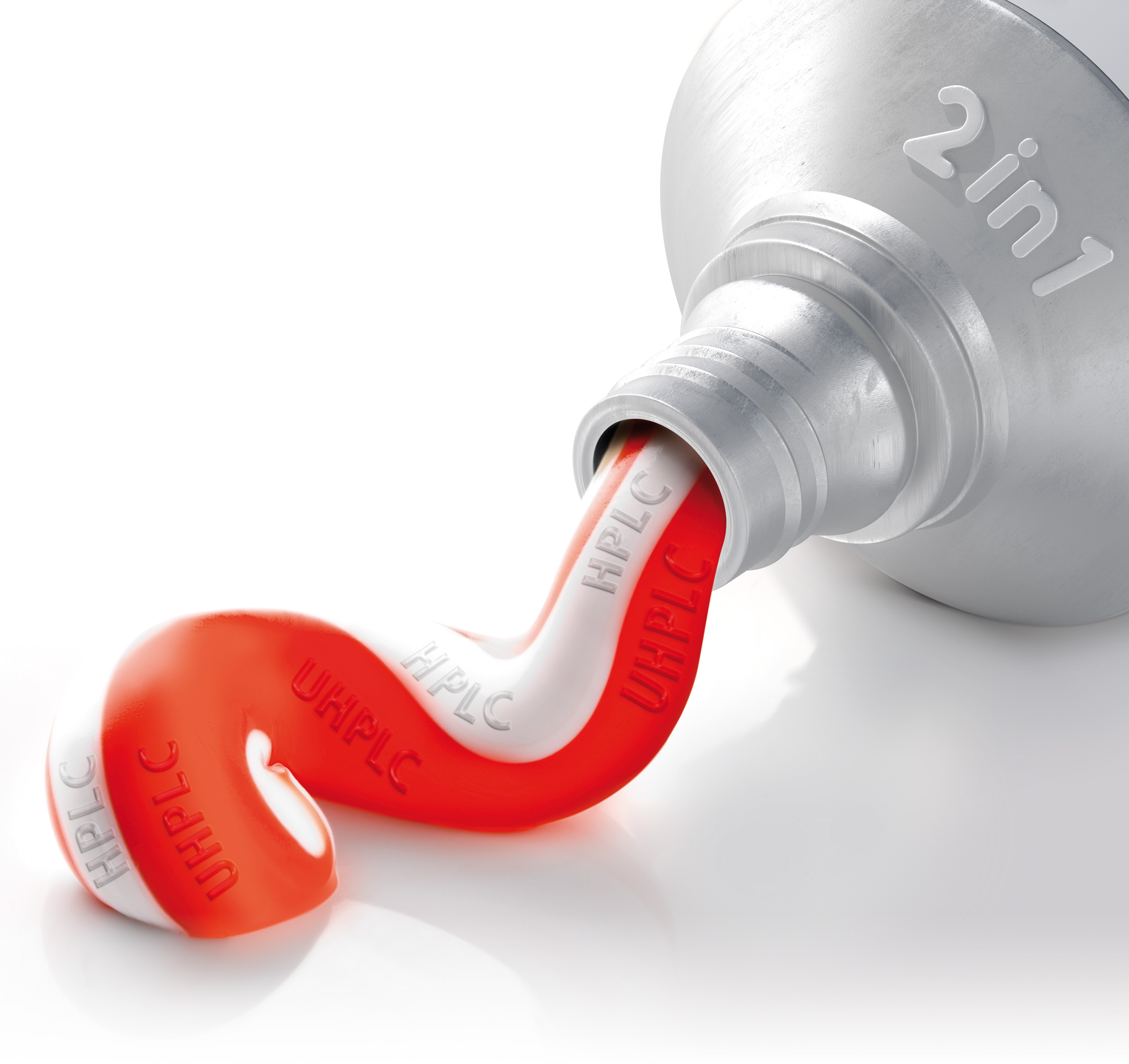
In recent years, there has been a strong focus on the use of UHPLC instruments and small particle columns to develop faster and better analytical methods that improve efficiency and throughput especially in R&D environments.
However, many of the analytical methods used in quality control laboratories, including those listed in the pharmacopeia, are conventional HPLC methods. Transferring these HPLC methods to UHPLC and validating the new methods is a time consuming and labor intensive task.
The Nexera-i MT incorporates two analytical flow lines with different system volumes into a single compact integrated LC. By automatic switching between these flow lines, Nexera-i MT seamlessly performs both HPLC and UHPLC analyses, preserving the relative separation pattern by compensating automatically for differences in system volume.
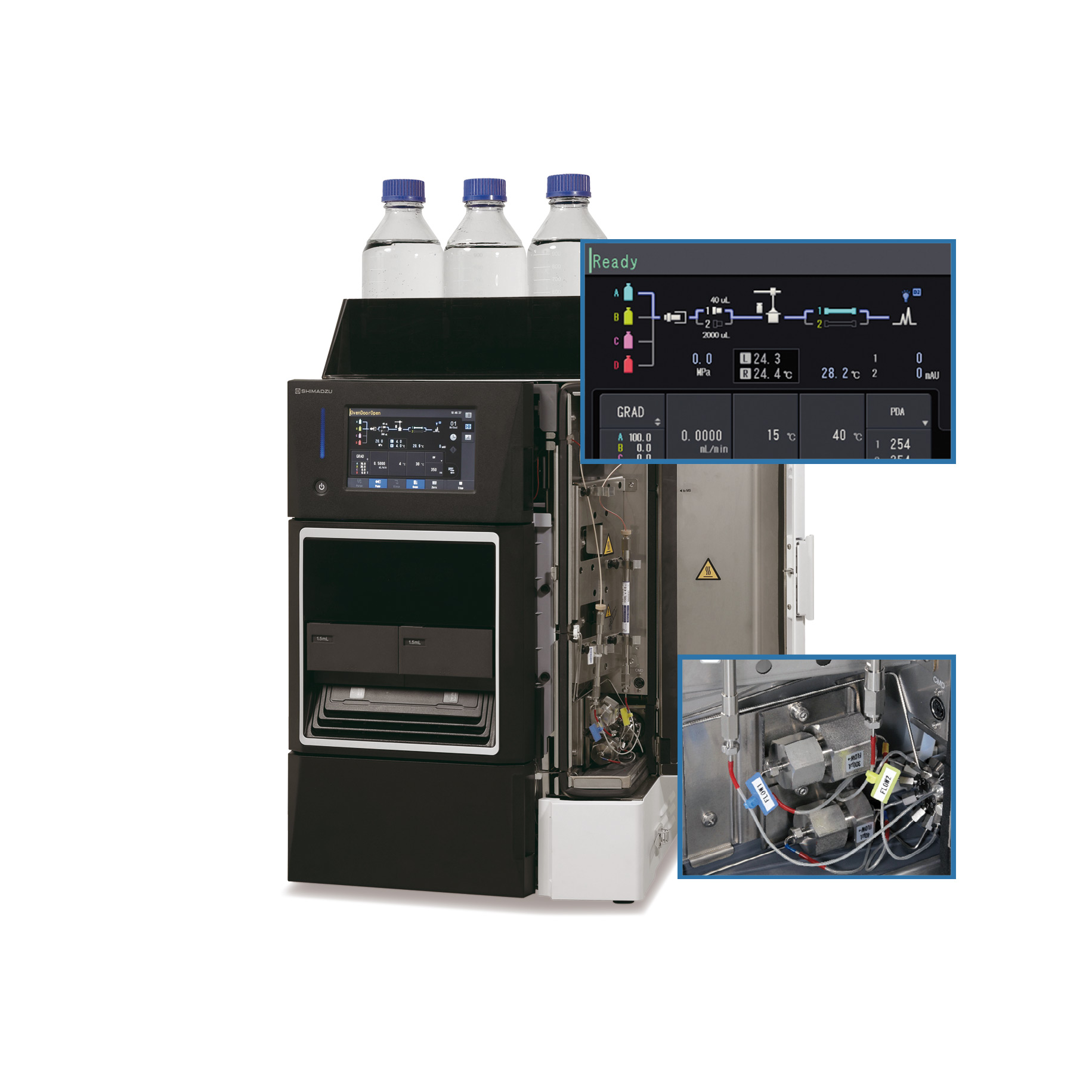 Figure 1: Nexera-i MT system
Figure 1: Nexera-i MT system
Consequently, Nexera-i MT achieves exceptional analytical reproducibility when switching from a system with large volume to a system with smaller volume, or vice-versa.
The same technology also allows Nexera-i MT to match any existing HPLC or UHPLC method run on competitive instrument platforms, eliminating the need to consider and carefully match plumbing to achieve identical system volumes between instruments.
The instrument offers enhanced functionality to support the transfer of existing HPLC methods to faster UHPLC analyses while assuring high cross-compatibility between the former and new method conditions. It can also be used for quick method development in UHPLC mode and seamlessly convert into HPLC methods for broader applicability by using a simple conversion program.
Two independent flow lines
Nexera-i MT features two independent and dedicated flow lines, one for UHPLC and the other for HPLC analyses. Newly developed Analytical Conditions Transfer and Optimization (ACTO) technology minimizes the effect of system volume differences between different systems on analytical results.
In addition to drastically improving the efficiency and quality of method development and transfer efforts in quality control departments, Nexera-i MT’s dual flow lines also maximize operational efficiency by enabling a single instrument to run both HPLC and UHPLC analyses, as opposed to separate dedicated instruments for each method.
As an example application figure 2 shows the analysis of five non-steroidal anti-inflammatory drugs on a conventional HPLC system from another vendor.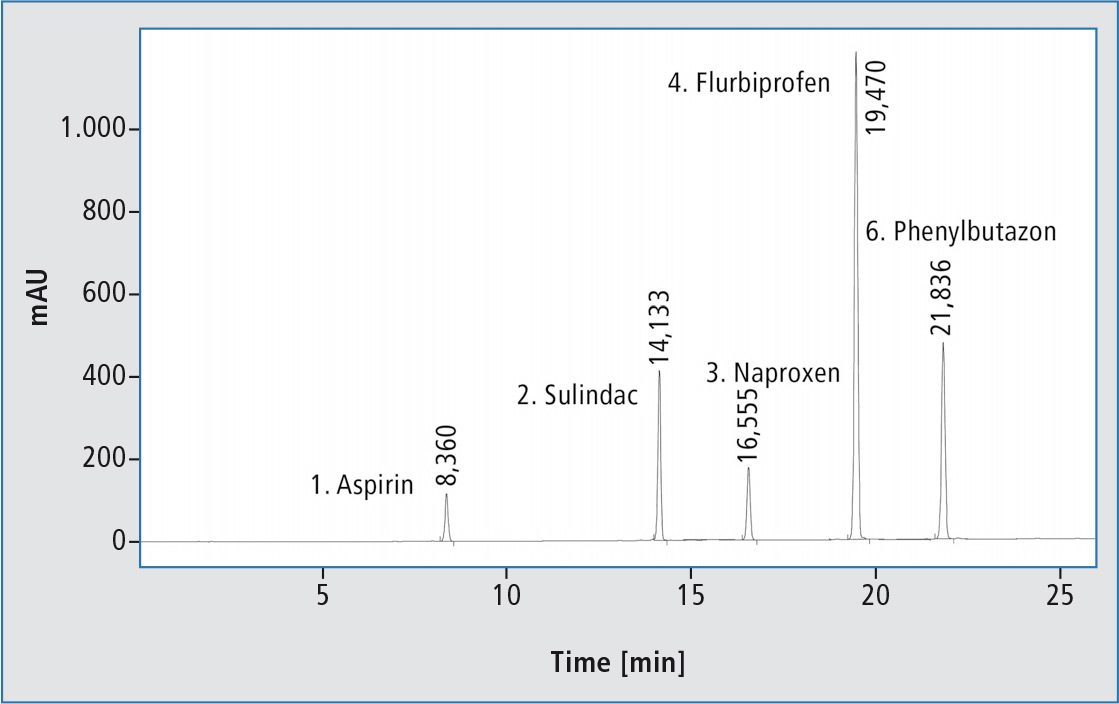 Figure 2: Separation of five NSAID’s on a non-Shimadzu HPLC system
Figure 2: Separation of five NSAID’s on a non-Shimadzu HPLC system
Method conditions:
Column:
ACE Excel 3 SuperC18
150 x 4.6 mm (ACT)
Mobile phase:
A: 0.1 % formic acid in H2O
B: 0.1 % formic acid in MeCN
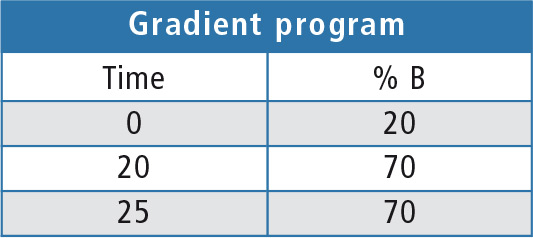 Followed by 11 min reequilibration time (20 % B) 36 min run time
Followed by 11 min reequilibration time (20 % B) 36 min run time
Flow rate: 1 mL/min
Temperature: 40 °C
Detection at: 254 nm
Sample: 0.6 mg Aspirin, 0.1 mg Sulindac and 0.2 mg of Naproxen, Flurbiprofen, Phenylbutazone in 1 mL Acetonitrile / Water (50:50 v/v)
Method transfer to a different system
If the HPLC system that was used to develop and run this method needs replacement but the same system is no longer available, the user will face the problem of having to transfer the method to another system, with different performance parameters and system volume. This may result in a totally different method that will render future results not comparable to previous data. On the other hand, when purchasing an older instrument to match the method conditions, the chance can be missed to get the latest equipment that could still be used when a more efficient, faster (UHPLC) method is required.
In this case, the Nexera-i MT system is the ideal solution. The customer acquires state-of-the-art equipment offering all the latest technology, including pressure resistance up to 660 bar, auto-validation function and touch panel control, and can accurately reproduce HPLC analysis from previously used methods.
To illustrate these features, the analysis shown in figure 2 was transferred to the Nexera-i MT system. Method conditions remained the same, while a small difference in system volume between the HPLC flow path and the other instrument was accounted for in the software (figure 3).
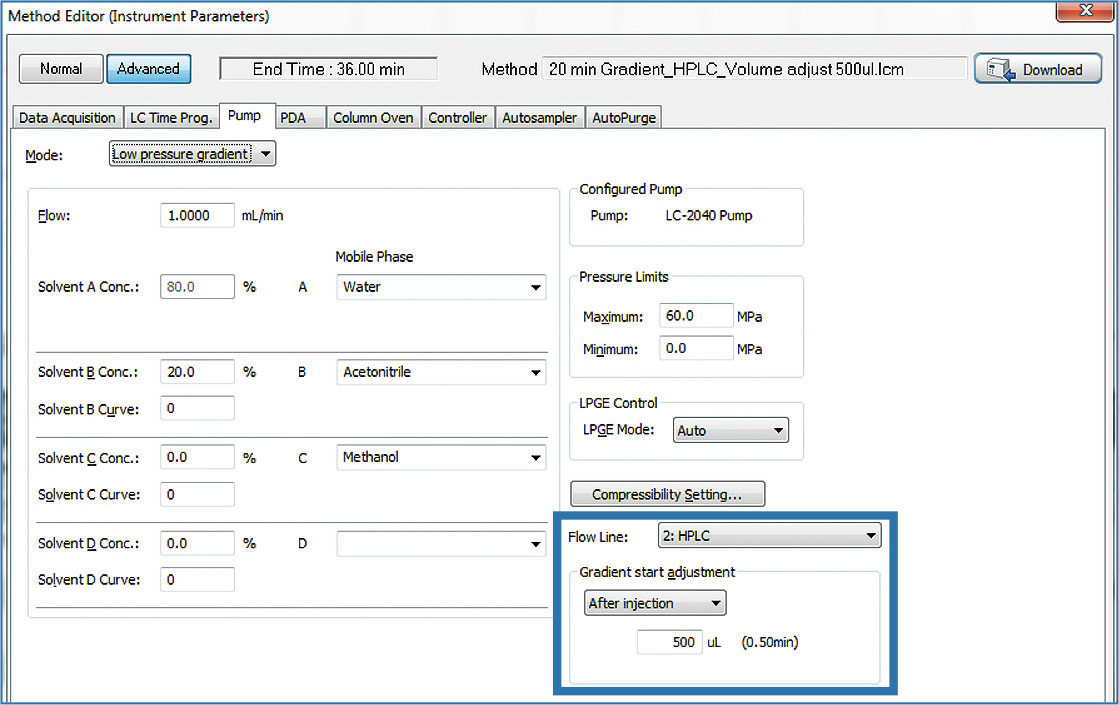 Figure 3: Gradient start adjustment in the LabSolutions software
Figure 3: Gradient start adjustment in the LabSolutions software
Using this feature and exactly the same analysis conditions including column and sample, the chromatogram could be reproduced almost identically (figure 4a, b).
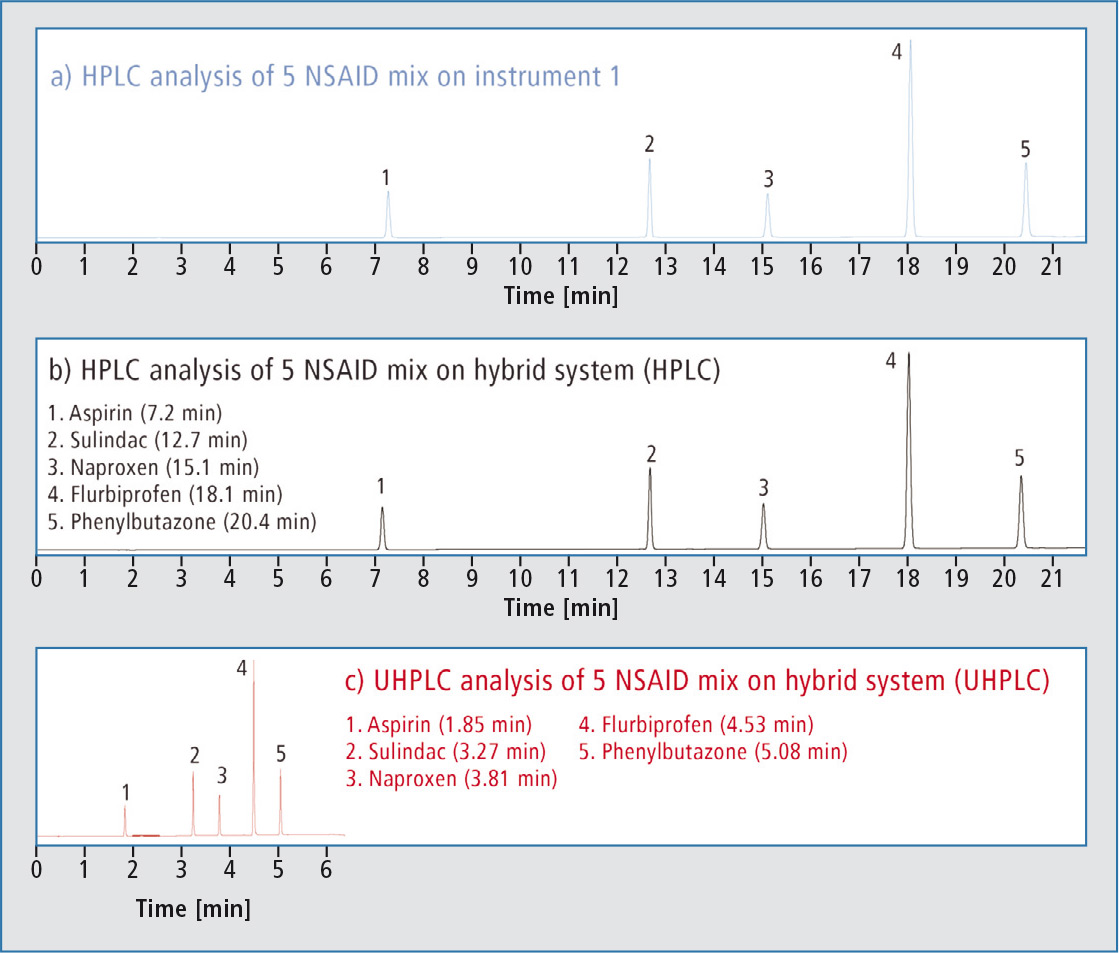 Figure 4: Comparison of the separation of five NSAIDs on a non-Shimadzu HPLC system a) the Nexera-i MT HPLC flow path (b) and in UHPLC mode (c)
Figure 4: Comparison of the separation of five NSAIDs on a non-Shimadzu HPLC system a) the Nexera-i MT HPLC flow path (b) and in UHPLC mode (c)
Method transfer tool increases efficiency with a mouse-click
Furthermore, by using the method transfer tool in the LabSolutions Software the method could be switched easily to the UHPLC flow path and run time was decreased by 19 min to an overall run time of 7 min (figure 4c).
And it doesn’t take an expert chromatographer to perform this kind of increase in efficiency. The ACTO function included in LabSolutions is an easy-to-use interface offering all necessary steps at the click of a mouse. The user only has to open the chosen HPLC method and click the method transfer button in the user interface (figure 5). Original and new method conditions including column dimensions and flow rate can be entered, and the software automatically calculates and incorporates the new gradient profile and method parameters to a new UHPLC method, which runs through the UHPLC flow path of the system.
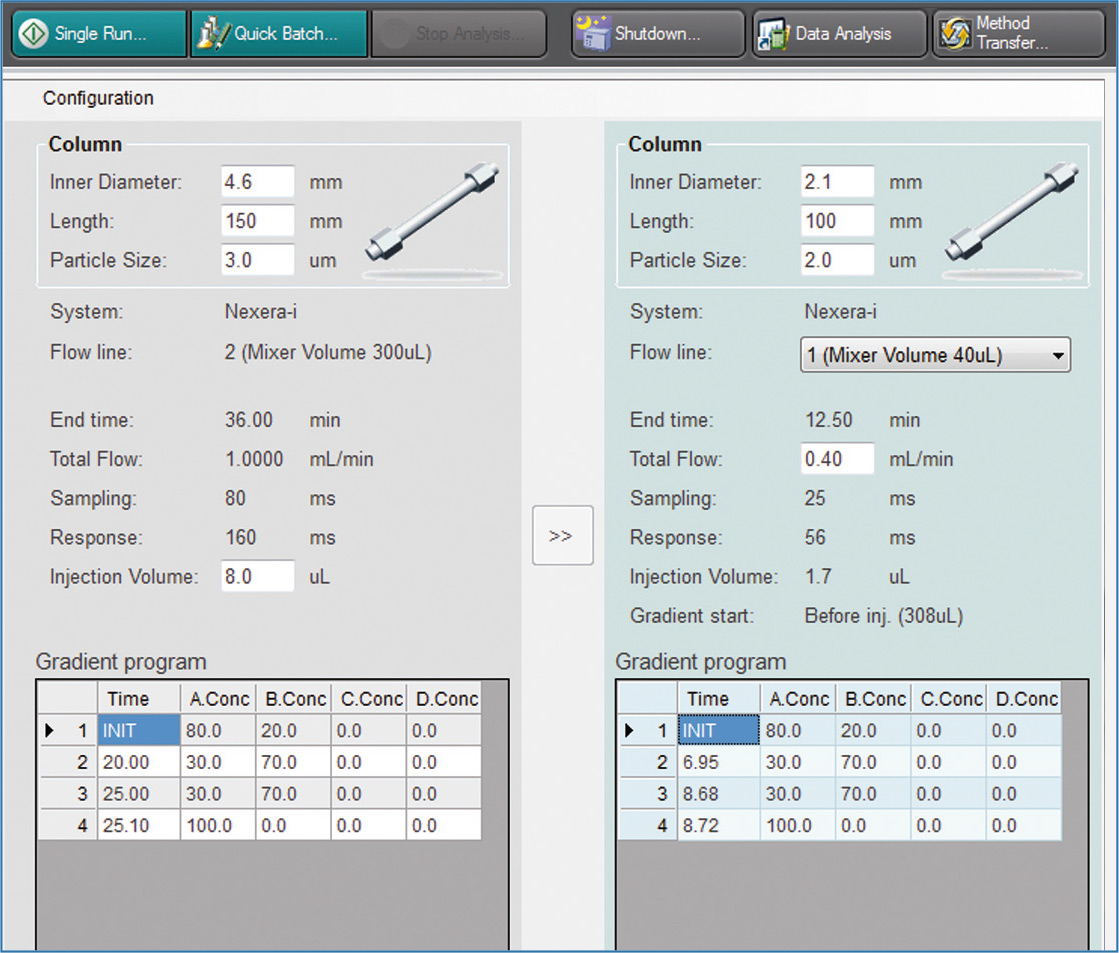 Figure 5: Method transfer calculator
Figure 5: Method transfer calculator
The combination of the Nexera-i MT system with LabSolutions and the systems’ unified graphical user interface and software allow intuitive operation independent of the user’s experience level. In addition, where another CDS is used, available software drivers allow the Nexera-i MT’s special features to be used with most other vendor software packages.
Further information on this article
www.shimadzu.eu/nexera-i-mt